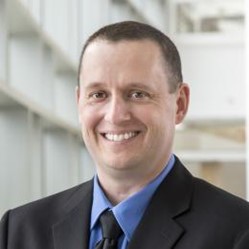Speaker Bio

Mark Lumsden
Oak Ridge National Laboratory, “Neutron Spectroscopy – Past, Present, and Future”
Abstract:
The development of nuclear reactors during the Manhattan Project enabled groundbreaking research using beams of neutrons. Ernest Wollan and Clifford Shull used the Oak Ridge Graphite Reactor to establish neutron diffraction as a technique for studying the structure of materials. Neutron spectroscopy, on the other hand, originated at the NRX reactor in Chalk River Canada. Bertram Brockhouse invented the triple-axis spectrometer and performed pioneering research studying dynamics of materials. Shull and Brockhouse won the 1994 Nobel Prize in Physics. Following his tenure in Chalk River, Brockhouse became a professor at McMaster University, my alma mater. In addition to their technical contributions, the legacy of both Brockhouse and Shull is also defined by the people they trained and attracted to the field. This legacy has influenced my career and, more broadly, neutron scattering at ORNL. While the triple-axis spectrometer remains an important tool in neutron spectroscopy today, time-of-flight spectrometers have, in recent years, transformed the technique. I will discuss the evolution of neutron spectroscopy over the last ~25 years with emphasis on the role ORNL has played in that development. Finally, I will provide a perspective on the future of inelastic neutron scattering including future sources and instruments and the expanded role computing will play in this technique.
Speaker’s Bio:
Mark Lumsden received his PhD from McMaster University in Hamilton, Ontario Canada in 1999 and joined Oak Ridge National Laboratory (ORNL) as a Eugene P. Wigner Fellow. He then joined the neutron scattering group at the High Flux Isotope Reactor (HFIR) where he was an instrument scientist on the HB-3 triple-axis spectrometer and was part of a team that developed the SPICE data acquisition software. He moved from HFIR to SNS in 2011, serving as the Leader of the Time-of-Flight Spectroscopy Group until 2017. In 2017, he became the Group Leader for a larger Spectroscopy Group and in 2020, became the Spectroscopy Section Head within the Neutron Scattering Division. This section operates 10 neutron spectrometers at HFIR and SNS providing an unmatched set of capabilities to the US research community. Mark’s research concentrates on using neutron scattering to study quantum materials and he is a fellow of the American Physical Society, the Neutron Scattering Society of America, and the American Association for the Advancement of Science.